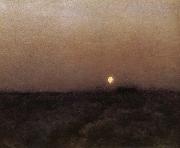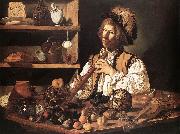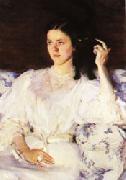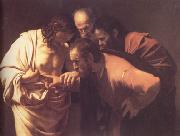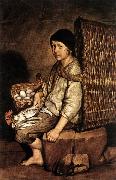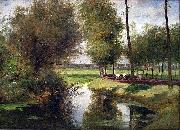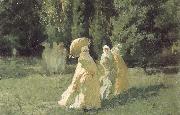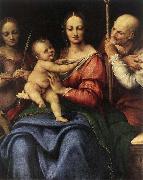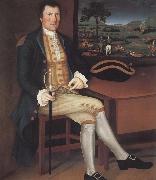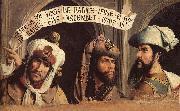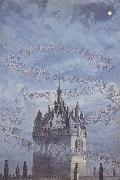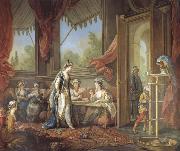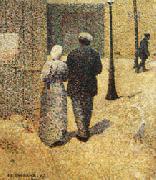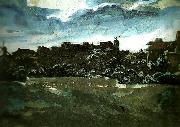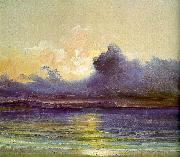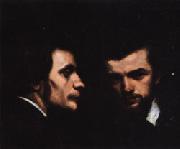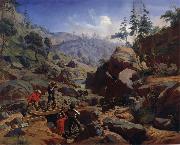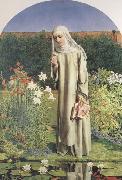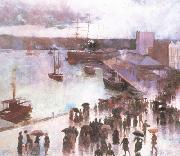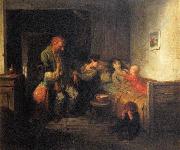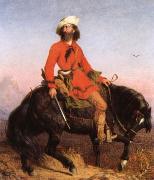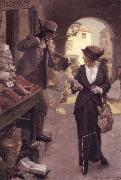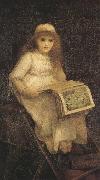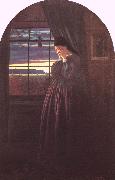|
|
|
|
|
|
|
|
|
|
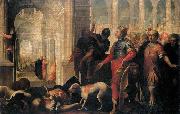 |
CELESTI, Andrea
|
|
Italian painter,
Venetian school
b. 1637, Venezia, d. 1712, Venezia |
|
 |
Cerano
|
|
(1557/1633) Cerano (Novara), Painter/ Sculptor |
|
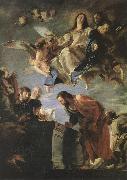 |
CEREZO, Mateo
|
|
Spanish painter (b. ca. 1626, Burgos, d. 1666, Madrid) |
|
|
|
|
|
|
|
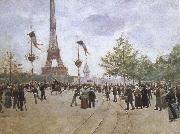 |
cesar franck
|
|
For playwright Frances Burney (1776 C 1828), niece of novelist Fanny Burney Madame d'Arblay 1752-1840, see Frances Burney (1776?C1828)
|
|
|
|
|
|
|
|
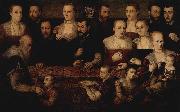 |
Cesare Vecellio
|
|
(c. 1530 - c. 1601) was an Italian painter and engraver of the Renaissance, active in Venice.
He was the cousin of the painter Titian. Like Titian, he was born at Cadore in the Veneto. He accompanied Titian to Augsburg in 1548, and seems to have worked as his assistant. Many of Cesare's pictures were ascribed, perhaps knowingly, to Titian. In the Milan Pinacoteca there is a small Trinity by Cesare. He died at Venice. The woodcuts for the contemporary fashion book, De gli Habiti Antichi e Moderni di Diversi Parti di Mondo published in Venice in 1590 by Cesare, in large may belong to Christopher Krieger from Nuremberg. Cesare also published a book of prints depicting the jewels of royal crowns, titled Corona delle nobili e virtuose donne (1591).
Cesare's brother, Fabrizio di Cadore or Ettore, was little known beyond his native place, for the Council-hall of which he is said to have painted a fine picture. He died in 1580.
|
|
|
|
|
|
|
|
|
|
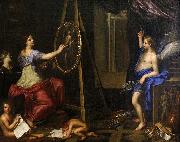 |
Charles Alphonse du Fresnoy
|
|
(1611C1665), French painter and writer on his art, was born in Paris, son of an apothecary.
He was destined for the medical profession, and well educated in Latin and Greek; but, having a natural propensity for the fine arts, he would not apply to his intended vocation, and was allowed to learn the rudiments of design under Perrier and Vouet. At the age of twenty-one he went off to Rome, with no resources; he drew ruins and architectural subjects.
After two years thus spent he re-encountered his old fellow-student Pierre Mignard, and by his aid obtained some amelioration of his professional prospects. He studied Raphael and the antique, went in 1633 to Venice, and in 1656 returned to France. During two years he was now employed in painting altar-pieces in the château du Raincy, landscapes, etc. His death was caused by an attack of apoplexy followed by palsy; he expired at Villiers-le-Bel, near Paris. He never married.
His pictorial works are few; they are correct in drawing, with something of the Caracci in design, and of Titian in colouring, but wanting fire and expression, and insufficient to keep his name in any eminent repute.
He is remembered now almost entirely as a writer rather than painter. His Latin poem, De arte graphica, was written during his Italian sojourn, and embodied his observations on the art of painting; it may be termed a critical treatise on the practice of the art, with general advice to students. The precepts are sound according to the standard of his time; the poetical merits slender enough. The Latin style is formed chiefly on Lucretius and Horace. |
|
|
|
|
|
|
|
|
|
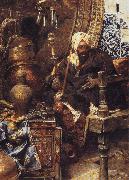 |
Charles Bargue
|
|
(c. 1826/1827?CApril 61883) was a French artist, a lithographer as well as a painter, who devised a drawing course.
Charles Bargue is mostly remembered for his Cours de dessin, one of the most influential classical drawing courses conceived in collaboration with Jean-L??on G??rôme. The course, published between 1866 and 1871 by Goupil & Cie, and composed of 197 lithographs printed as individual sheets, was to guide students from plaster casts to the study of great master drawings and finally to drawing from the living model.
Among the artists whose work is based on the study of Bargue's platework, is Vincent van Gogh who copied the complete set in 1880/1881, and (at least a part of it) again in 1890. |
|
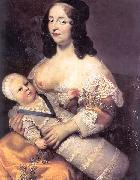 |
Charles Beaubrun
|
|
(Charles Bobrun) (1604 - 1692) was a French portrait painter active in Paris between 1630-70.
Charles Beaubrun was born at Amboise, a member of a distinguished family of painters. He studied under his uncle Louis Beaubrun (d. 1627). He and his cousin Henri Beaubrun (II) (1603 - 1677), were portrait painters in the courts of King Louis XIII and Louis XIV of France. Some of his work is jointly attributed to Henri. His youngest brother, Michel Beaubrun (d 1642), was also a painter. Charles Beaubrun died at Paris.
|
|
|
|
|
|
|
|
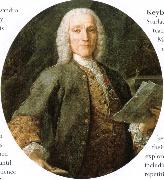 |
charles burney
|
|
Period: Classical (1750-1819)
Country: England
Born: April 07, 1726
Died: April 12, 1814 in Chelsea |
|
|
|
|
|
 |
Charles Codman
|
|
(circa 1800-1842) was a landscape painter of Portland, Maine. His art is featured at the Portland Museum of Art as mature, fine early American landscape painting.
Codman was probably from Boston and was apprenticed to the ornamental painter, John Ritto Penniman. Codman began as a decorative painter and had no formal training but eventually produced mature works of romance and beauty. One of his more important commissions was to design and paint five fireboards (decorative panels placed over hearths during the summertime) in the landscape style, for the Portland mansion of shipbuilder James Deering. He also filled commissions for both portraiture and decorative arts. |
|
|
|
|
|
|
|
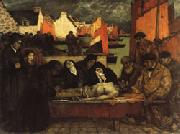 |
Charles Cottet
|
|
Charles Cottet (1863-1925), French painter, was born at Le Puy-en-Velay and died in Paris. A famed post-impressionist, Cottet is known for his dark, evocative painting of rural Brittany and seascapes. He led a school of painters known as the Bande noire or Nubians group (for the somber palette they used, in contrast to the brighter post-impressionist paintings), and was friends with such artists as Auguste Rodin.
Cottet studied at the École des Beaux-Arts, and under Puvis de Chavannes and Roll, while also attending the Academie Julian (where fellow students formed Les Nabis school of painting, with which he was later associated). He travelled and painted in Egypt, Italy, and on Lake Geneva, but he made his name with his sombre and gloomy, firmly designed, severe and impressive scenes of life on the Brittany coast.
Cottet exhibited at the Salon of 1889, but on a trip to Brittany in 1886 he had found his true calling. For the next twenty years he painted scenes of rural and harbor life, portraying a culture Parisians still found exotic. He is especially noted for his dark seascapes of Breton harbors at dawn, and evocative scenes from the lives of Breton fishermen.
He was close friends with Charles Maurin, and his group included the painter Felix-Émile-Jean Vallotton. Cottet has often been associated with the picturesque seaside symbolism of the Pont-Aven School, though Vallotton famously painted Cottet as a leader of Les Nabis, beside Pierre Bonnard, Edouard Vuillard, and Ker-Xavier Roussel, in his Five Painters (1902-3; Kunstmuseum Winterthur). Cottet was more explicitly the leader of his own small movement, the Bande noire of the 1890s, which included Lucien Simon and Andre Dauchez, all influenced by the realism and dark colours of Courbet.
|
|
|
|
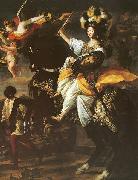 |
Charles Dauphin
|
|
Charles Claude Dauphin or Dofin, called in Italian Delfino, a French painter of historical subjects and portraits, was the son of Olivier Dauphin. He went to Turin about the year 1664, and worked there for the Prince of Carignano. He was also employed for the churches, but his works are in no great estimation, abounding as they do with the most ridiculous absurdities. In the church of San Carlo is an altar-piece by him, described by Lanzi as a most ludicrous composition. He died in 1677. |
|
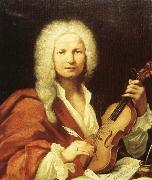 |
charles de brosses
|
|
(1709-77). President of the Parlement de Dijon, friend of the philosophes, and in Diderot's words une petite tete gaie, ironique et satiriquee. His learned publications include important work on the origins of language (Traite de la formation m??canique des langues, 1765) and on primitive religion (Du culte des dieux fetiches, 1760). His Lettres familieres crites d Italie en 1739 et 1740, published posthumously in 1799 and much loved by Stendhal, offer a model of personal travel writing, in which detailed accounts of art works and monuments, not always complimentary, or a careful description of Vesuvius, addressed to Buffon, are interspersed with sprightly, enthusiastic accounts of the peculiarities and the aesthetic and sensual pleasures of life in Italy.
|
|
|
|
 |
Charles de La Fosse
|
|
(June 16, 1636 - December 13, 1716), French painter, was born in Paris.
He was one of the most noted and least servile pupils of Le Brun, under whose direction he shared in the chief of the great decorative works undertaken in the reign of Louis XIV. Leaving France in 1662, he spent two years in Rome and three in Venice. The influence of his prolonged studies of Veronese is evident in his "Finding of Moses" (Louvre), an in his "Rape of Proserpine" (Louvre), which he presented to the Royal Academy as his diploma picture in 1673. He was at once named assistant professor, and in 1674 the full responsibilities of the office devolved on him, but his engagements did not prevent his accepting in 1689 the invitation of Lord Montagu to decorate Montagu House.
He visited London twice, remaining on the second occasionetogether with Rousseau and Monnoyer more than two years. William III vainly strove to detain him in England by the proposal that he should decorate Hampton Court, for Le Brun was dead, and Mansart pressed La Fosse to return to Paris to take in hand the cupola of Les Invalides. The decorations of Montagu House are destroyed, those of Versailles are restored, and the dome of the Invalides (engraved, Picart and Cochin) is now the only work existing which gives a full measure of his talent. During his latter years La Fosse executed many other important decorations in public buildings and private houses, notably in that of Crozat, under whose roof he died on 13 December 1716.
This article incorporates text from a publication now in the public domain: Chisholm, Hugh, ed (1911). Encyclopædia Britannica (11th ed.). Cambridge University Press.
|
|
|
|
|
|
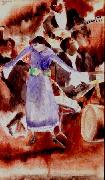 |
Charles Demuth
|
|
(November 8, 1883 - October 23, 1935) was an American watercolorist who turned to oils late in his career, developing a style of painting known as Precisionism.
"Search the history of American art," wrote Ken Johnson in the New York Times, "and you will discover few watercolors more beautiful than those of Charles Demuth. Combining exacting botanical observation and loosely Cubist abstraction, his watercolors of flowers, fruit and vegetables have a magical liveliness and an almost shocking sensuousness."
Demuth was a lifelong resident of Lancaster, Pennsylvania. The home he shared with his mother is now a museum of his work. He graduated from Franklin & Marshall Academy before studying at Drexel University and at Philadelphia's Pennsylvania Academy of Fine Arts. |
|
 |
Charles Dixon
|
|
1872-1934. English painter, born in Goring-on-Thames in Oxfordshire on 8 December 1872 |
|
|
|
|
|
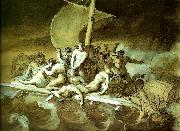 |
charles emile callande
|
|
1797-183
Charles-Emile-Callande de Champmartin (Bourges, 1797 -Paris,1883) was a French painter.
His numerous portraits, historical and religious pictures were very popular. |
|
|
|
|







